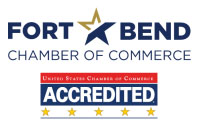Shopping for homeowner insurance is one of those nagging home buying details that sometimes manages to slip though the cracks. It’s not unusual for insurance agents to receive last-minute frantic phone calls from title and / or escrow companies requesting a home insurance binder. To save yourself trouble, it’s a good idea to start shopping for a homeowner policy as soon as your purchase offer is accepted. Here are a few tips about buying homeowner insurance that are designed to save you time and money:
Determine Insurability
Your insurance agent needs extensive information from you to quote you the best rate for your policy. To determine insurability, an agent will ask:
- When was the home built?
- How old is the plumbing and electrical?
- What type of roof?
- What’s the square footage?
- How many claims have been filed over the past 5 years?
- Where is the home located?
If the home is located in a rural area without a nearby fire department or there is no fire hydrant on the street, some companies may refuse to insure it. In that case, you may have to inquire at a specialty or surplus-lines company, and this quote will take longer to obtain.
Deductibles
You can save money by having a higher deductible on your policy. Typically, insurance companies will start giving discounts at a $500 deductible and increase the discount as your deductible increases. Most companies offer deductibles up to $10,000. Be careful, however, because many mortgage companies will not allow you to exceed a $1,000 deductible, so check with your lender before opting for a higher deductible.
How Much Insurance Do You Need?
Most agents use a cost estimator to figure cost replacement estimates. This will ensure that your home is insured for the correct amount. Insurance companies do not insure dirt. If you buy a home that includes a large lot, do not be astonished when you receive an insurance policy for a lot less than what you paid for the home. This is because you are buying coverage for the home and not the land.
In the past, replacement coverage was called Guaranteed Replacement Cost. There is no such coverage anymore. Today it is Replacement Cost Coverage, which means each insurance company designates a percentage of additional coverage on top of the insured amount. This is designed to protect the homeowner who has suffered a loss from having to pay additional construction costs to rebuild. It can cost more to build because of inflation or simply because material prices have increased. For example, if the dwelling coverage is insured for $300,000, and the company has 125% replacement cost coverage, the homeowner would receive an additional $75,000.
I recommend 200% replacement cost coverage, which gives homeowners double the coverage.
Policy Options
You have other choices on your home insurance policy that you can tailor. Liability coverage is a part of your homeowner’s insurance policy that is often overlooked. This protects the insured against claims arising from bodily injury and property damage to others. For example, if your five-year-old was playing with matches and set your neighbor’s house on fire, your liability coverage would pay for this damage. You might have to move out of the neighborhood, but your insurance policy would pay your neighbor.
It is common to see $300,000 in coverage for liability, but the cost to raise it to $500,000 is about $20 more a year. You can have up to one-million coverage on most policies. Over that, you need an excess liability policy or “umbrella” policy. Umbrella policies give you an additional $1,000,000 liability coverage for a $300 to $500 premium.
Available Discounts
Make sure that you are getting all of the credits for which you are eligible. If you have an alarm system that reports to a central station (a company such as Brinks or ADT), in some cases, you can get up to a 10% discount. If you are over 50 and care to admit it, you may be eligible for a discount. Companies have different names for age preference policies, from senior discount to mature policyholder discount.
The most common discount is the multi-policy discount. This will save you money on your home and auto insurance. By combining the two policies with the same company, you are given a certain percentage discount on both. the percentage discounts vary among companies, so it’s best to shop around.
Review Your Policies
Call your agent and review your homeowner policy at least every three years. Needs change, markets change and coverages change. You should stay up-to-date on your insurance because you never know when you will need to rely on it.




